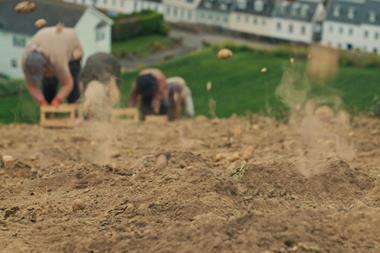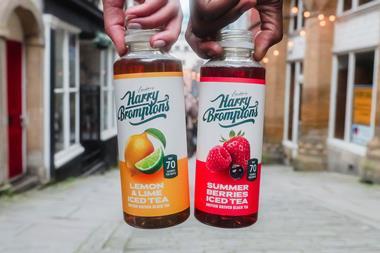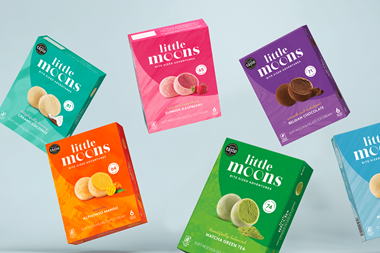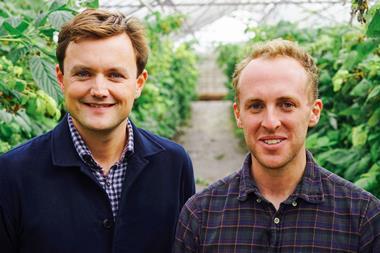Prime was always likely to struggle to maintain its explosive growth, having added £148m from a near-standing start in 2023.
Even so, the news that the sports hydration and energy drinks brand’s sales are down by more than 50% since the turn of the year comes as a shock.
After all, this is a brand which – on its UK arrival less than two years ago – had shoppers scrapping in-store to secure bottles; saw convenience stores banned from TikTok amid allegations of ‘price gouging’; and spawned its own app dedicated to tracking when new flavours launched in stores.
Now, bottles of its Hydration drink are clogging up shelves, leading retailers to slash prices by up to 87%. Sales of the line have slumped, from a high of 41.2% [Circana 4 we 12 August 2023] to just 10.4% of total sports drink sales [Circana 4 we 23 March 2024].
As one senior sector source put it to The Grocer last week: “you almost can’t give them away.”
So, where has it all gone wrong for Logan Paul and KSI’s soft drinks sensation? What’s next for the brand, and what does its rapid rise and fall say about viral fmcg launches more generally?
How scarcity drove Prime sales
A major factor driving Prime’s success was its scarcity. For much of the early part of 2023, the brand was so hard to get hold of, retailers could charge a premium and know bottles would still fly off shelves.
“People were charging crazy prices because you could – it was on fire,” says Nisa retailer Amrit Singh – one of the first in the UK to stock Prime. “Mind you, at that time we were paying crazy wholesale prices for it.”
Average selling prices have dramatically slumped as distribution has widened. Little over a year ago, Prime Hydration was selling for an average of £2.65 per unit, 68% more than the wider sports drink category average [Circana 4 we 4 March 2023]. By Christmas, this figure had fallen to £1.89, just 17% ahead of the category [Circana 4 we 30 December 2023].
That was always going to make matching last year’s sales watermark a tough ask, even with availability across the mults.
Why energy drinks extension failed to fly
The launch of Prime Energy last spring was designed to add incremental sales but – hit by criticism over its high caffeine content and up against giants like Monster – the extension has failed to take off. Its monthly sales of £526k are equal to just 0.31% of the total category [Circana 4 we 23 March 2024].
“The product’s just not as good, and the caffeine content for such a small can is stupidly high,” explains Tom Bastable, founder of the UK Prime Tracker app. He says the negative publicity around the launch of Prime Energy will have bled across to Hydration sales.
“There’s this really common misconception that Hydration was an energy drink, and I think that’s something that has still marred them today,” he says.
Another problem – according to brand and marketing advisor Mark McCulloch – has been Prime’s unwillingness to play by traditional brand-building rules.
“When it comes to marketing, the whole thing is about mix,” he says. “They’ve flooded the market but there hasn’t been a proper strategy or budget to keep it going.
“They were in the scarcity business, but when you’re as available as Coca-Cola you’re competing against them, and it’s a completely different ball game.”
What will Prime do next?
To win back favour, McCulloch says the brand could look outside the world of food and beverage. He cites the example of Nike’s Jordan collection sneakers, suggesting Prime could look to re-engage its consumer base with limited-edition bottles designed by celebrities.
Trademark applications covering booze, protein bars, CBD and vaping – as well as recent fmcg launches from YouTube group The Sidemen (of which KSI is a member), however, hint Prime’s owners are more interested in leveraging what remains of the brand’s appeal in other categories.
McCulloch says this signals they are trying to “milk as much out of the brand as possible” before selling up and moving on.
“With these guys, I don’t think it’s a case of ‘this is my next 30 years’,” he says. “I think it’s more, ‘let’s capitalise and make hay while the sun shines and then move on’.”
Just a playground fad?
Singh also believes Prime is unlikely to endure. Unlike other viral brands like Little Moons, he says, it doesn’t have a pre-existing audience to fall back on.
“It was a pump and dump – a product was just made to go viral,” he says. “Little Moons was different in the sense that it was long established prior to the viral part.”
He likens the way kids collected and traded bottles to playground fads of years gone by.
“The problem with collectability is it’s not repetitive,” he says. “It’s like trading cards – once you’ve got your Wayne Rooney card and completed the set, you don’t keep buying packs.
“Just like every other kid in every other generation that had a collection of something or other, whether it be trading cards, or Yu-Gi-Oh, or Pokémon, eventually it will end up in a box in the attic or in the bin.”




















No comments yet